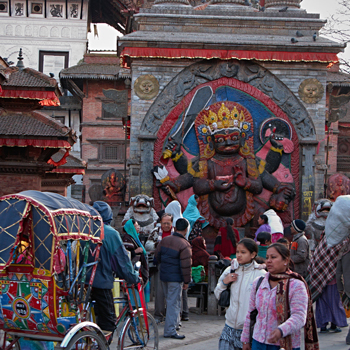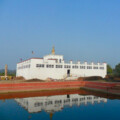Kathmandu, the vibrant capital of Nepal, boasts a rich tapestry of history and culture. From the majestic temples of Durbar Square to the serene monasteries of Swayambhunath, the city whispers tales of ancient civilizations. Antique shops in Kathmandu serve as custodians of this legacy, offering a window into the artistic traditions and everyday lives of generations past.
This guide delves into the world of Kathmandu’s enticing antique stores, helping you navigate this treasure trove. Whether you’re a seasoned collector or simply curious about Nepal’s heritage, here’s everything you need to know about antique shops in Nepal.
1. The Allure of the Antique
For collectors, there’s a unique charm in owning an antique. Each piece embodies a story, a whisper of the past waiting to be unearthed. In Kathmandu, antiques hold even greater significance. They serve as physical links to Nepal’s fascinating history, reflecting the artistic expressions and daily lives of its people through the ages.
A Treasure Trove Awaits
Kathmandu’s antique shops brim with an enticing array of finds. Explore Thamel, a bustling tourist hub, where shops overflow with captivating Tibetan prayer wheels, intricately woven carpets, and bronze statues depicting revered Buddhist deities.
Beyond the Obvious: Unveiling Hidden Gems
While Thamel offers a concentrated collection, venturing beyond unlocks hidden treasures. Asan Tole, Kathmandu’s oldest marketplace, boasts narrow alleys lined with shops specializing in traditional Nepali handicrafts. Here, you might discover antique brass utensils, hand-carved wooden furniture, or even traditional clothing adorned with intricate embroidery.
A Collector’s Toolkit: Ensuring Authenticity
The allure of genuine historical artifacts is undeniable. However, exercising caution when shopping for antiques in Kathmandu is crucial. Seek reputable shops with established histories. Feel free to ask questions about the origin and age of the pieces. If you need more time, consider consulting a local expert for guidance.
2. Top Antique Shops in Kathmandu
The first part of our guide explored the captivating world of antique shops in Kathmandu. Now, we delve deeper, highlighting some of the city’s finest establishments where you can unearth treasures whispering tales of Nepal’s past.
A Collector’s Paradise: Thamel’s Gems
Nepal Handicraft: Nestled in the heart of Thamel, this shop boasts a curated collection spanning centuries. Explore captivating Tibetan prayer wheels, singing bowls, old statues, Khatwang weapons, Handcraft brass, Ghost Caps, and antique Vajras.
This shop is located at Bhagawati Temple in Thamel, between LOD and Narshaing Chowk. The owner, Keshav, offers all antique goods at the best prices. You can contact him directly via phone or WhatsApp at +9779841251463. We highly recommend this shop to our guests. The photos shown here are from this store. Please ask for permission before taking any photos during your visit.

[contact-form-7 id=”bec8616″ title=”Inquiry From – Blog”]
Universal Art Gallery: Established in 1987, this family-run business specializes in a diverse range of antiques. Browse captivating bronze statues depicting Hindu and Buddhist deities alongside a collection of antique jewelry adorned with precious stones.
Tashi Gallery: Located in Thamel, this unique shop offers a curated selection of antiques from the Himalayan region. Explore artifacts from Tibet, Nepal, Bhutan, and China, including captivating Himalayan textiles and ceremonial objects.
Hamro Hastakala: Venture into the narrow alleys of Asan Tole to discover this haven of traditional Nepali crafts. Here, you might find unique antique brass utensils used in everyday Nepali life alongside intricately carved wooden furniture passed down through generations.
Remember, bargaining is customary in Kathmandu’s shops! Approach it with a smile and respect, and you might score a fantastic deal on a one-of-a-kind treasure.
This list provides a starting point for your exploration of Kathmandu’s antique shops. However, the true joy lies in uncovering hidden gems tucked away in unexpected corners. So, keep your eyes peeled, ask friendly shopkeepers for recommendations, and embrace the thrill of the hunt!

3. Popular Antique Shops in Kathmandu
Our exploration of antique shops in Kathmandu continues! Having delved into the allure of antiques and highlighted some top establishments, we now shift focus to the city’s diverse shopping districts.
Thamel: A Treasure Trove for Tourists and Collectors Alike
Thamel, Kathmandu’s vibrant tourist hub, is a fantastic starting point for antique enthusiasts. Here, a plethora of shops line the bustling streets, overflowing with an enticing array of finds. Explore Tibetan prayer wheels, intricately woven pashmina shawls, and captivating bronze statues depicting revered Buddhist deities.
Beyond the Bustle: Unearthing Treasures in Durbar Square
Venture beyond Thamel’s lively streets and discover the historic charm of Durbar Square. Rich in history, this World Heritage Site features numerous antique shops tucked among its ancient palaces and temples. Here, you might find unique artifacts reflecting Nepal’s rich cultural heritage, from elaborately carved wooden masks to traditional Nepali clothing adorned with intricate embroidery.

A Haven for Art Lovers: Unveiling Patan’s Antique Delights
Patan, a city renowned for its artistic heritage, offers a unique antique shopping experience. Explore narrow alleys lined with shops specializing in exquisite metalwork and intricately hand-painted Thangka scrolls. You might also stumble upon captivating stone sculptures or antique furniture crafted from local hardwoods.
Important Tips for Navigating Kathmandu’s Antique Shops
While exploring these vibrant shopping areas, remember these essential tips:
- Bargaining is customary! Approach it with a smile and respect, and you might score a fantastic deal.
- Ask questions! Feel free to inquire about the origin and age of the pieces to ensure authenticity.
- Look for reputable shops. Establishments with established histories offer greater peace of mind.
4. What to Look for When Shopping for Antiques
So far, our guide has unveiled the captivating world of antique shops in Kathmandu. We’ve explored top establishments, diverse shopping districts, and the thrill of the hunt. Now, we equip you with essential knowledge to become a savvy antique shopper in Kathmandu.
Unearthing Gems: Identifying Genuine Antiques
The allure of genuine historical artifacts is undeniable, but exercising caution is crucial. Here are some tips for identifying authentic pieces:
- Material Matters: Look for materials that are consistent with the claimed age. For instance, antique furniture shouldn’t have plywood or particle board, which are common materials in modern pieces.
- The Power of Patina: Natural wear and tear tell a story. Genuine antiques often develop a patina, a surface layer reflecting age and use. Be wary of items with artificial aging.
- Scrutinize Craftsmanship: Examine joinery techniques and details. Handcrafted antiques often showcase superior craftsmanship compared to mass-produced pieces.

Avoiding Common Pitfalls
While navigating Kathmandu’s vibrant antique scene, be aware of these common pitfalls:
- Modern Reproductions: Some shops might sell replicas disguised as antiques. Be cautious of items that appear “too perfect” for their age.
- Repaired Items: Restoration is common, but extensive repairs can decrease an antique’s value. Understand the difference between minor wear and significant alterations.
The Price Isn’t Always Right. Be bold and negotiate! Bargaining is customary in Kathmandu’s shops. However, avoid offers that seem unrealistically low, as they might indicate inauthenticity.
The Art of the Bargain
Negotiating is an essential part of the antique shopping experience in Kathmandu. Here are some pointers:
- Do Your Research: Have a general idea of the fair market value for similar items before entering negotiations.
- Start Low, Go High: Begin with a lower offer and gradually increase it while remaining respectful.
- Be Patient and Polite: Negotiations can take time. Maintain a friendly demeanor and avoid being pushy.
Remember, the key to successful antique shopping in Kathmandu is a combination of knowledge, patience, and a keen eye!

5. Essential Legal Considerations
Our comprehensive guide to antique shops in Kathmandu has equipped you with the knowledge to identify treasures, navigate shopping districts, and become a savvy negotiator. But before finalizing your purchases, understanding the legal considerations of buying and exporting antiques from Nepal is crucial.
Protecting Nepal’s Heritage
Nepal has strict regulations in place to protect its rich cultural heritage. Antiques are considered national treasures, and their export is heavily regulated. Always prioritize ethical practices and avoid attempting to export any item that appears to be of significant historical or cultural value.
What You Can (and Can’t) Take Home
Generally, items considered antiques require an export license issued by the Department of Archaeology of Nepal. This applies to artifacts exceeding 100 years in age, including:
- Sculptures and statues made from metal, stone, or wood
- Paintings and Thangka scrolls
- Antique weaponry
- Religious artifacts and ceremonial objects
- Traditional clothing and textiles
Obtaining the Necessary Documentation
If you find a piece you genuinely believe is less than 100 years old, you can still encounter challenges when exporting. Here’s why:
- Shopkeeper Expertise: Not all shopkeepers possess in-depth knowledge of an item’s exact age.
- The Burden of Proof: The onus falls on you to prove the item’s age is less than 100 years. This often requires an official document from the shopkeeper or a certified appraiser.
The Importance of Certificates
To ensure a smooth export process, obtain a certificate from the Department of Archaeology declaring the item’s age and permitting its export. This can involve:
- Expert Evaluation: The Department might request the item be evaluated by a government-approved appraiser.
- Export Fees: Export licenses and certificates often incur fees based on the item’s value.
The Final Step: Customs Clearance
When departing Nepal, present your export license and certificate at customs. Officials might request a physical inspection of the item.
Remember: When in doubt, it’s always best to consult with a reputable antique dealer in Kathmandu or seek guidance from the Department of Archaeology before finalizing your purchase.
6. Caring for Your Treasures
Your Kathmandu antique shopping adventure has been a success! Now, the cherished pieces you discovered whisper stories of Nepal’s history in your own home. But as with any treasure, proper care is essential to ensure they continue to radiate beauty for years to come.
Preserving Your Past: Essential Care Tips
- Environmental Factors Matter: Light, humidity, and temperature can significantly impact antiques. Keep items away from direct sunlight and excessive heat to prevent fading or warping. Maintain a moderate, stable temperature and humidity level in your home.
- Dusting with Care: Regularly dust your antiques with a soft, dry cloth. Please do not use chemicals or any types of cleaners, as they can damage the surfaces of the antique goods.
Location, Location, Location: Choose a stable and secure location to display your antiques. Avoid placing them near windows or vents to minimize exposure to sunlight and dust. - Specialized Care: For specific materials like textiles or metalwork, research appropriate cleaning and maintenance techniques. Consider consulting a professional conservator for valuable items.
Kathmandu’s Restoration Resources
Kathmandu boasts skilled artisans specializing in the restoration and repair of antiques. If your treasured piece requires expert attention, here are some resources to consider:
- Antique Shops: Many reputable antique shops in Kathmandu maintain relationships with skilled restoration specialists. Inquire with the shopkeeper from whom you purchased the item – they might be able to recommend a trusted professional.
- The Department of Archaeology: Nepal’s Department of Archaeology maintains a list of qualified conservators who can restore items of significant cultural or historical value.
Remember, preventative care is key! By adhering to these straightforward tips and consulting professionals when necessary, you can preserve your Kathmandu antiques as cherished possessions for generations.

Unveiling Kathmandu’s Past: Summary of Treasure Hunter’s Guide to Antique Shops
Kathmandu’s antique shops are more than just retail spaces; they’re gateways to Nepal’s captivating history. Each artifact whispers a tale, a tangible connection to the lives and artistry of generations past. This comprehensive guide has equipped you to navigate this treasure trove, from identifying genuine pieces to securing the perfect souvenir.
A Treasure Trove Awaits – Antique Shop in Nepal
We’ve explored the allure of antiques in Kathmandu, highlighting the top establishments and diverse shopping districts like Thamel, Durbar Square, and Patan. Remember, bargaining is customary, so approach it with a smile and respect!
Essential Tips for Savvy Shoppers
Become a discerning collector with our valuable tips. Learn to identify genuine antiques, avoid common pitfalls, and navigate the art of negotiation. Understanding the legal considerations of buying and exporting antiques is crucial. When in doubt, consult a reputable dealer or the Department of Archaeology.
Caring for Your Treasures
Once you’ve unearthed your perfect find, proper care ensures its longevity. Implement these essential tips and consider seeking professional restoration services offered by Kathmandu’s skilled artisans.
Explore, Discover, and Share
Antique shops in Kathmandu offer an unparalleled experience. Explore hidden gems, support local businesses, and discover unique pieces that resonate with you. Let your newfound knowledge guide you on your treasure hunt! We invite you to share your experiences and findings in the comments below.
Kathmandu Awaits
Your exploration of Kathmandu’s vibrant antique scene continues. Kathmandu city provides a wealth of cultural experiences. After a successful shopping spree, unwind with a cup of traditional Nepali tea and savor delectable momos. Finally, consider the ultimate adventure – a breathtaking helicopter tour for a top view of Mount Everest, the crown jewel of the Himalayas.







